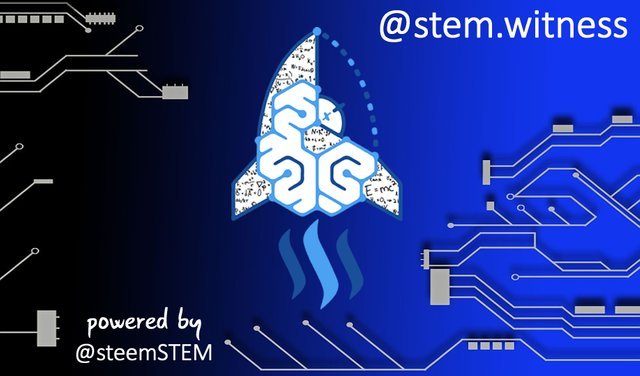Introduction
In this article I'll be talking about how doctors know what's wrong with a patient. Doctors use tool known as pathologic process. While there are easy diagnosis made in the hospital pathologic process are the real genius behind difficult diagnosis. Yeah there about the handful of them. In this article I'll be giving you their definitions, their classifications, and their characteristics I hope you love it!!!
Pathologic processes
•Inflammation
•Lysis
•Dysgenesis
•Ischemia
•Neoplasia
•Degeneration
•Degenerate metabolism
•Deranged immunologic process. •Truama
1.Inflammation
.jpeg)
Inflammation of skin tissue_Free for use
Definition: This is the normal response of living tissue to injurious agents be it physical, (like a hammer on your thumb) chemical, (like hydrochloric acid on your skin) or biological (like bacteria in your lungs). The response to physical chemical or biological agent are similar, first the agent diluted by increasing the volume of blood flow to the area. This produces the characteristic reddish appearance of inflammation. For the physical agent, it protects structures, for the chemical agent it neutralizes its effect, and for the biological agent it carries the body is fighting mechanisms towards the biologic agents. Added to all these it carries nutrients oxygen and other important components of tissue regrowth.
Classification
Depending on how long the inflammation last it can be classified into acute or chronic.
Acute inflammation: This type of inflammation is usually of a short duration may last up to minutes or several hours or maybe a few days. And is of less medical significance.
Chronic inflammation: this type of inflammation is of long duration and may last from weeks to months to even years.
**The clinical features **
•Redness (rubor)
•Swelling tumor
•heat (calor)
•loss of function (functio lasio)
non specific effects include fever, increase in slow wave sleep, decreased appetite and hypotension.
2.Lysis

Lysisbof Red blood cells_Free for use
Definition: This is any form of breakdown mainly the breaking of membrane-bound structures such as cells.
Classification
Based of the tissue affected:
Blood cells (haemolysis): This is the breakdown of erythrocytes (medical term for red blood cells) the features that are seen are yellowness of the eyesand skin) or jaundice (due to release of bilirubin in the cells-bilrubin is coloured yellow and stains the eyes and skin) pallor (due to reduced cell concentration) and hemoglobinuria (which is hemoglobin in urine check (my other post)[]) due to release of heamoglobin the oxygen carrying protein in red cells.
Bone (Ostiolysis): Bone breakdown is usually accompanied by resumption into the blood. Clinical features the doctor will find are bone pain and fractures
Immune destruction of foreign cells or cells in the body by immunologic mechanisms: in autoimmune conditions where the body's soldiers (white blood cells) attacks itself and breaks down tissue. In this case features of and inflammation due to biologic agent will be seen
3.Dysgenesis
.jpeg)
Dysgenesis(talipase) of the foot and legs)Free for use
Definition: This is any form abnormal cellular, tissue or organ. development.
Classification
i.Single primary defect in development
•Malformation: This happens during the process of development of the organ. For example a hole can be in the heart if in the process of was not completed.
•Deformation: This mostly involves musculoskeletal system and is usually caused by intrauterine formation from either intrinsic or pressure from outside the uterus. A typical example is in congenital talipes equinus and congenital hip dislocation.
•Dysplasia: when during development an abnormal tissue in an abnormal anatomical site. For example the cells in skin are squamous (flat) if they are columnar (raised) it is an indicator of a pathologic process
ii. Chromosomal abnormalities
Those affecting number an an example is seen in down syndrome (trisomy 21) and edward syndrome (trisomy 18) usually monosomies are more fatal and do not survive past intrauterine life. These usually present with multiple abnormalities.
•Those affecting the structure of the chromosomes: these are usually deletions translocations inversions ring chromosomes duplications and insertion
•Those affecting sex chromosomes an example is seen in turner syndrome klinefelter syndrome
•Fragile sites example is fragile x syndrome
•Mosaicism: This happens when abnormal cells are coexisting with normal cells in a particular ratio
5. Ischemia
.jpeg)
Ischemia of the foot_Free for use
Definition: This is a pathologic process that comes about as a result of lack of blood supply
Classification
This can be classified based on reversibility into reversible and irreversible
Clinical characteristics
There is no clear cut distinction between reversible and irreversible cell injury form of ischemia. The first feature is cellular oedema which is reversible, but if the injurious agent continues to stimulate the area there's a progression to gradual destruction of cell membrane, the mitochondria is affected and changes irreversibly.
The clinical features
•Pain
•Loss-of-function all of the organ involved
•Terminal, there is necrosis of the affected part
Neoplasia
.jpeg)
Lung cancer animation_Free for use
Definition: New growth, the growth of which is excessive and is uncoordinated with that of the normal tissue and persist in the same excess manner after cessation of the stimuli which evoked the change. Long definition but let's break it down:
•Neoplasia is derived from two words neo and plasia together meaning new growth.
•It is excessive and uncoordinated: unlike normal tissue which is coordinated by hormonal signals and grows at its normal pace neoplastic tissue does not follow this regulation
•usually neoplasm continues after the stimulus that brought about it has faded away as is seen in breast cancer where oestrogen causes growth of abnormal breast tissue.
Classification
Neoplasm is classified into benign tumors and malignant tumors according to how aggressive it is. benign tumors are usually localised in a particular area it's only present usually with pressure symptoms. malignant tumors and spread too distant organs and cause damage in this site (metastasis).
Clinical features
•Hematologic (blood and blood cells)system: anaemia, bleeding tendencies, infections etc
•Endocrine(hormones) system: the activity such as hormone production is effected and para neoplastic syndrome( disease process happening due to the fact that a malignancy exist).
•Central nervous system: their features of raised intracranial pressure (thereby applying pressure on sites in the brain) which will cause disorders in gait, visual abnormalities and cranial nerve palsies.
•Digestive system: the tumor can cause intestinal obstruction, hematochezia (which means blood in faeces) and hematemesis (which means blood in vomit).
•Respiratory system: you can find cough (this is due to irritation in the respiratory system) and hemoptysis (which means blood in sputum, due to an injury in the respiratory system)
•Musculoskeletal system: one of the features usually seeing is pain also found are swelling and pathologic fractures
•Urogenital (urinary and genital)system: there might be an abnormal mass in the lower pelvic region and they might be blood in urine.
•Other nonspecific features are wasting cachexia, anorexia and also features from the pressure of the tumor (not different from what you find in the central nervous system).
6.Degeneration
.jpeg)
Degeneration in the eye_free for use
Definition: this is defined as a change in cell or tissue or organ in any organised structure, consisting of a breakdown in to disorganised or less organised state.
Classification
Based on the nature of tissue I have classified degeneration into:
•Fatty degeneration
•Wallerian degeneration
•Atheromatous degeneration
•Cystic degeneration
•Cheesy degeneration
Fatty degeneration: as the name implies it means degeneration in fatty tissue for example subcutaneous fat necrosis in birth asphyxia.
Wallerian degeneration: This type of degeneration happens in nerve cells where one part is transacted and leads to degeneration of the part that is closer to the periphery for example if the transaction takes place around the knee the rest of the nerve fibres around the leg get degenerated.
Atheromatous degeneration: this type of generation happens in the arteries where lost of the inner artery covering of the artery leads to the buildup of plaques known as atheromatous plaques.
7. Deranged metabolic process
.jpeg)
The pancreas in diabetes mellitus_free for use
Definition: the metabolism is pathologic when the biochemical processes are abnormal metabolic disorders can be either congenital or acquired
Classification
Based on metabolic pathways (because in the human body food substances are being broken down and built continually):
•Disorders of carbohydrate metabolism
•Disorders of amino acid metabolism
•Disorders purine (nuclear) metabolism
•Disorders of Lipid (fat) metabolism
•Carbohyrdrate metabolism
for example diabetes mellitus galactosemia fructose urea glycogen storage diseases
•Disorders of amino acid metabolism for example 16 urea fanconi syndrome where am I know acid are found in the urine.
•Disorders of purine metabolism for example gout where the breakdown products of the nucleus of cells are abnormally produced in increasing amount leading to accumulation.
•Lipid disorders for example hyperlipidemia a family of disorders where there is high amount of cholesterol in the blood.
Clinical features of metabolic disorders usually depends on the type of metabolic disorders. For example in diabetes mellitus there is polyurea polydipsia polyphagia and weight loss or weight gain.
8. Deranged immunologic process
.jpeg)
Hives on the wrist_free for use
Definition this is when there is an abnormal response to an immunologic agent.
Classification
There are four types of immunological responses of clinical significance:
•Anaphylactic
•Cytotoxic
•Immune complex
•Delayed type
Type I or anaphylactic: This occures within minutes after the combination of an allergen(an outsider protein) with antibody (marker for outsider protein) in individuals previously sensitize to the allergen.
clinical types
These include:
•skin allergies (where contact with certain chemicals cause skin reactions)
•Allergic rhinitis (where inhaling certain chemicals causes rhinitis)
•Conjunctivitis (where contact with some chemicals on the eye causes the eye to become)
•Bronchial asthma (where contact with certain chemicals causes difficulty breathing)
•Allergic gastroenteritis (where ingestion setting food substances causes severe abdominal pain, nausea and vomiting)
Type II or cytotoxic:
The antibodies produced by the immune response bind to antigens on the patient's own cell surfaces. The antigens recognized in this way may either be intrinsic ("self" antigen, innately part of the patient's cells) or extrinsic (adsorbed onto the cells during exposure to some foreign antigen, possibly as part of infection with a pathogen)
there are four common clinical types
•transfusion reaction (where an individual rejects blood transfused to the person)
•Erythroblastic fetalis (where mixing of maternal blood and fetal blood causes features of anaemia such as pallor)
•Autoimmune hemolytic anaemia (where use of certain drugs causes the red cells to be marked and destroyed).
Type III or immune complex
occurs when there is accumulation of immune complexes (antigen-antibody complexes) that have not been adequately cleared by innate immune cells, giving rise to an inflammatory responses and attraction of leukocytes
They are two clinical types usually referenced
•Glomerulonephritis (the complex is found accumulate in the kidney and cause inflammation in the kidney)
Type IV or Delayed type
Unlike the other types, it is not antibody-mediated but rather is a type of cell-mediated response.
The main clinical type is tuberculine reaction. In this type of hypersensitivity reaction difference l mycobacterium tuberculosis is warded off from further spread by the cells of the body causing what is known as a granuloma (foreign sale trapped within host immune cells).
9. Trauma
.jpeg)
Phycological trauma_free for use
Definition: This is an injury to the body which usually results from an external force or a psychological shock especially one having a lasting effect on the personality.
Classification
This is based on the agent inflicting the injury.
•Mechanical
•Psychological
•Extremes of temperature
•Sudden changes in atmospheric pressure
•Radiation
•Electrical shock
clinical features include fracture, burns, psychotic behaviour and cancers from radiation.
References
•Intoduction to clinical medicine by the University of Portharcourt Health Team.
•https://en.m.wikipedia.org/wiki/Hypersensitivity
•https://en.m.wikipedia.org/wiki/Metabolic_disorder
•https://en.m.wikipedia.org/wiki/Inflammation
•https://en.m.wikipedia.org/wiki/Dysgenesis
Read also
•
•https://www.ncbi.nlm.nih.gov/pmc/articles/PMC3458185/
•https://www.thefreedictionary.com/pathologic+process
•https://en.m.wikipedia.org/wiki/Inflammation
I hope this post gives you insight about how doctors make their decision in the hospital day to day especially the big ones, hope you enjoyed reading this post
don't forget to upvote resteem and comment
This is the first article in a group of articles on pathologic processes I hope you enjoy the series have fun and enjoy your day.



 Don't forget support @steemstem in becoming a witness.
Don't forget support @steemstem in becoming a witness.
Also check out other lovely post on @wafrica and @stach, medically related post on @airclinic. Thank you!!
.jpeg)
Hello! I find your post valuable for the wafrica community! Thanks for the great post! We encourage and support quality contents and projects from the West African region.
Do you have a suggestion, concern or want to appear as a guest author on WAfrica, join our discord server and discuss with a member of our curation team.
Don't forget to join us every Sunday by 20:30GMT for our Sunday WAFRO party on our discord channel. Thank you.